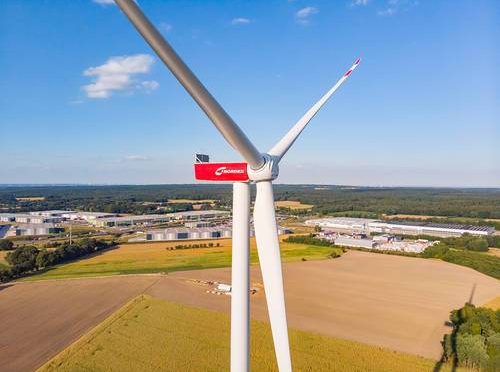After a long period in which Poland’s climate policy has largely neglected renewables across the country, the country’s Ministry of Climate is setting new priorities for green investments in the Polish wind power industry.
This means that Poland, which covers most of its energy demand with fossil fuels, may now be at a tipping point and looking to make a significant contribution to the energy transition. A key task will be to replace old coal-fired power plants with renewable energy sources and to move closer to the EU’s climate policy goals.
The state has subsidized energy in Poland through an auction system since 2016. Energy sources are divided into different classes, which are auctioned separately. Onshore wind and photovoltaic (PV) installations are in the same auction basket. Due to the cost competitiveness of onshore wind turbines compared to other energy sources, between 2018 and 2019 about 3.3 GW of capacity was allocated to onshore wind turbines. Another round of auctions is expected by the end of 2020, with some 800 MW of onshore wind power. and 700 MW for photovoltaic installations. However, this share could be much higher due to the strong competitive position of onshore wind, and the Polish government has recently considered extending the auctions until 2026.
The heavy dependence of the Polish electricity system on coal power and the increase in energy prices due to carbon emissions are making the wholesale price of electricity in Poland one of the highest in Europe. Therefore, the latest developments also show that interest in PPAs, that is, long-term power purchase agreements, has increased within the country. The PPA business model, which involves purchasing electricity directly from the renewable energy producer and entering into a long-term electricity supply contract for an agreed price in advance, is becoming an attractive counter-model outside of the national support program.
Nordex Group customers have also placed orders for the delivery of Delta4000 series N149 / 4.0-4.5 wind turbines for PPA-based wind projects. The N149 / 4.0-4.5 was the world’s first wind turbine with flexible nominal capacity included in the design and operation strategy. This design approach in combination with a variety of modes of operation makes it possible to tailor each Delta4000 to the specific requirements of the grid operator, wind farm, local wind conditions and noise specifications. The N149 / 5.X and N163 / 5.X models took this flexible approach to a new level, and now a wide range of power modes can be covered in the 5 MW + class.
Poland is once again considered an interesting wind market for investors and developers of onshore wind projects. It is reasonable to assume that the appeal of PPPs will increase and that there may be some political turmoil. The 10H rule conversation, which was introduced in 2016 and states that the minimum distance between a wind turbine and the nearest residential building should be ten times the height of the turbine, is another important step in the country’s climate policy debate. . The Polish government has announced its intention to relax this restrictive rule and publish information on the easing before the end of 2020.
The Nordex Group has been represented in Poland since 2007. The company currently employs 48 people who are spread over the local head office in Warsaw and nine service points across the country. The onshore wind power capacity installed to date exceeds 460 MW. The wind turbines, primarily of the Delta generation, the fourth generation of the Nordex Group’s multi-megawatt platform, are currently under construction and are ready to produce an additional 178 MW. With these types of wind turbines, Nordex Group customers benefit from sophisticated technical solutions that have proven themselves a thousand times over.
Interest in renewable energy in Poland is growing. Thanks to a wide range of flexible products and solutions, the Nordex Group is perfectly positioned to meet the specific project requirements of the region and the individual needs of customers.


